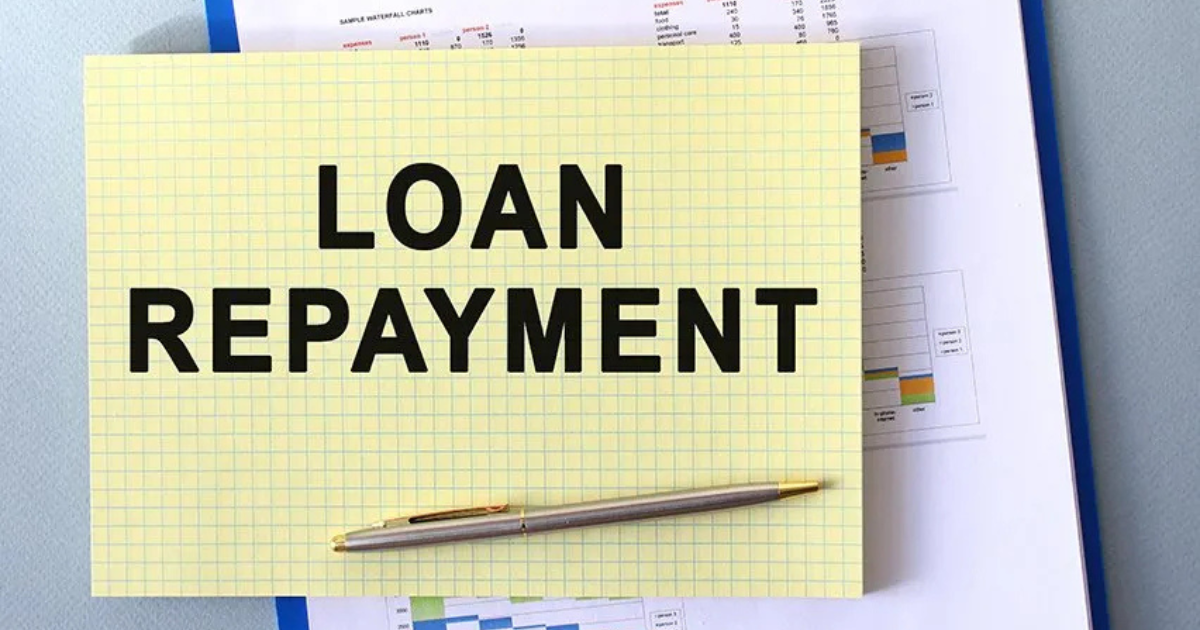Taking out a loan can be an effective way to achieve important financial goals, such as purchasing a home, paying for education, or starting a business. However, one of the most crucial aspects of borrowing money is the repayment process. Understanding the basics of loan repayment is essential to ensure that you manage your debts efficiently, maintain a good credit score, and avoid financial stress in the future. This guide will walk you through the key aspects of loan repayment, helping you understand how loans work, the different types of loan repayment options, and how to handle your loan repayment responsibilities.
What is Loan Repayment?
Loan repayment is the process of paying back money borrowed from a lender, typically in installments over a specified period. The repayment amount usually includes both the principal (the amount you borrowed) and interest (the cost of borrowing). Loan repayment schedules can vary based on the type of loan and the agreement between the borrower and the lender.
When you take out a loan, you enter into a legally binding contract that outlines the terms of repayment, including how much you need to pay, when payments are due, and the interest rate. It’s important to understand these terms so you can plan your finances accordingly.
Types of Loans and Their Repayment Structures
There are many different types of loans available, each with its own repayment structure. Understanding the nuances of each type can help you navigate the repayment process more effectively.
1. Personal Loans
Personal loans are unsecured loans that can be used for various purposes, such as consolidating debt, covering medical expenses, or funding a major purchase. These loans typically have fixed interest rates and fixed repayment terms, meaning you’ll make the same monthly payment over the life of the loan.
Repayment Terms:
- Fixed Payments: Most personal loans have fixed monthly payments, making it easy to budget.
- Loan Term: Loan terms typically range from 1 to 5 years.
2. Student Loans

Student loans are used to pay for education-related expenses, such as tuition, books, and living costs. They can either be federal or private loans, each with different repayment options and terms.
Repayment Terms:
- Federal Student Loans: These often come with flexible repayment options, including Income-Driven Repayment Plans (IDR), deferment, and forbearance.
- Private Student Loans: These loans generally have fewer repayment options and can have higher interest rates.
3. Mortgage Loans
A mortgage loan is used to purchase real estate, and the property itself serves as collateral. These loans typically have longer repayment terms, ranging from 15 to 30 years, and may have either fixed or adjustable interest rates.
Repayment Terms:
- Fixed Rate Mortgages: Your monthly payment remains the same throughout the loan term.
- Adjustable Rate Mortgages (ARMs): The interest rate changes after an initial fixed period, which can lead to variations in your monthly payment.
4. Auto Loans
Auto loans are used to purchase vehicles, and the car itself serves as collateral. These loans typically have shorter repayment periods than mortgages, often ranging from 3 to 7 years.
Repayment Terms:
- Fixed Payments: Auto loans usually come with fixed monthly payments, which makes budgeting easier.
- Shorter Loan Term: The loan term for auto loans is typically between 3 to 7 years.
5. Credit Cards and Revolving Credit
While not a traditional loan, credit cards and lines of credit work similarly to loans, as they allow you to borrow money up to a certain limit. The repayment structure for credit cards is different because you can carry a balance from month to month, paying interest on the outstanding amount.
Repayment Terms:
- Minimum Payments: You’re typically required to make at least a minimum payment each month, but paying only the minimum amount will extend the repayment period and increase the total interest paid.
Key Components of Loan Repayment
When it comes to loan repayment, it’s important to understand the key components that make up your monthly payment. These elements can vary depending on the type of loan, but they generally consist of the following:
1. Principal
The principal is the original amount of money you borrowed from the lender. As you make payments, a portion of each payment goes toward reducing the principal balance.
2. Interest
Interest is the cost of borrowing money, expressed as a percentage rate. The interest rate can be fixed (remaining the same throughout the life of the loan) or variable (changing based on market conditions). Over time, interest payments can add a significant amount to the total cost of the loan.
3. Loan Term
The loan term is the period over which you agree to repay the loan. A longer loan term generally results in lower monthly payments, but you may end up paying more in interest over the life of the loan. Conversely, a shorter loan term means higher monthly payments but less interest paid overall.
4. Repayment Schedule
The repayment schedule outlines the frequency and amount of payments you need to make. Some loans have monthly payments, while others may have weekly or bi-weekly payments. It’s essential to stick to the repayment schedule to avoid penalties or damage to your credit score.
5. Fees and Penalties
Some loans come with additional fees, such as late payment fees, prepayment penalties, or loan origination fees. It’s important to review the terms of your loan agreement to understand any potential fees and penalties that could impact your repayment plan.
Common Loan Repayment Options
Understanding your repayment options can help you manage your loan more effectively, especially if you encounter financial difficulties during the repayment process.
1. Standard Repayment Plan

This is the default repayment plan for many types of loans. Under a standard plan, you’ll make fixed monthly payments over the loan term until the loan is fully paid off. This plan is straightforward and ensures that you’ll pay off the loan in the shortest amount of time.
2. Income-Driven Repayment Plans
Income-driven repayment plans are typically available for federal student loans and allow you to adjust your monthly payments based on your income and family size. These plans can be helpful if you have a fluctuating income or are experiencing financial hardship.
3. Graduated Repayment Plan
A graduated repayment plan is often used for student loans. Under this plan, you begin with lower monthly payments that increase over time. This option can help you if you expect your income to rise in the future.
4. Deferment and Forbearance
Deferment and forbearance are options that allow you to temporarily pause your loan payments without going into default. These options are typically available for federal student loans, but they may also apply to other types of loans in certain circumstances, such as financial hardship or unemployment.
5. Refinancing or Consolidation
Loan refinancing or consolidation allows you to combine multiple loans into a single loan, often with a lower interest rate. This can make loan repayment more manageable and reduce your monthly payments, but it may extend the loan term or result in a higher total cost of the loan.
How to Stay on Top of Your Loan Repayment
Managing loan repayment can be challenging, but there are several strategies you can use to stay organized and avoid late payments.
1. Create a Budget
A budget can help you track your income and expenses, ensuring that you have enough money to make your loan payments. Include your loan repayment as a priority expense in your budget to avoid missing payments.
2. Set Up Automatic Payments
Many lenders offer automatic payment options that can help ensure you never miss a payment. By setting up auto-pay, your loan payments will be deducted directly from your bank account each month.
3. Pay More Than the Minimum Payment
If possible, try to make extra payments toward your loan principal. By paying more than the minimum required amount, you can reduce the amount of interest you pay over the life of the loan and pay off your debt faster.
4. Monitor Your Loan Status
Keep track of your loan balance and ensure that your payments are being applied correctly. If you notice any discrepancies or issues with your loan, contact your lender immediately to resolve them.
Also Read: How Payday Loans Work: A Step-by-step Breakdown
Conclusion
Loan repayment is a crucial aspect of managing your finances. Understanding the basics of loan repayment, including the different types of loans, repayment plans, and strategies for staying on track, will help you manage your debt responsibly and avoid unnecessary financial stress. Whether you’re dealing with student loans, mortgages, or personal loans, being proactive about your loan repayment will set you on a path toward financial stability and success.
FAQs
1. What happens if I miss a loan payment?
Missing a loan payment can result in late fees, increased interest rates, and potential damage to your credit score. If you’re unable to make a payment, contact your lender as soon as possible to discuss deferment or forbearance options.
2. Can I pay off my loan early?
Yes, most loans allow you to make extra payments or pay off your loan early. However, some loans may have prepayment penalties, so it’s important to review your loan agreement before making additional payments.
3. What is the difference between deferment and forbearance?
Deferment and forbearance are both options that allow you to temporarily pause loan payments, but they differ in terms of eligibility and how interest is handled. In deferment, the government may pay the interest on your loan, while in forbearance, you are responsible for the interest.
4. How does refinancing affect my loan repayment?
Refinancing involves taking out a new loan to pay off your existing loan, usually at a lower interest rate. This can reduce your monthly payments and the total amount of interest you’ll pay, but it may extend your repayment term.
5. What is an income-driven repayment plan?
An income-driven repayment plan adjusts your monthly payments based on your income and family size. These plans are designed to make loan repayment more manageable if you’re experiencing financial difficulty.

